<< Previous | Displaying results 2676-2700 of 6771 for "" | Next >>
Arrival of political prisoners at the Oranienburg concentration camp. Oranienburg, Germany, 1933.
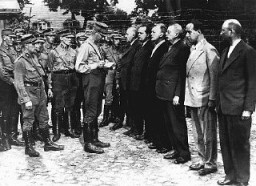
Social Democratic political prisoners in the Duerrgoy concentration camp near Breslau. Seated in the center is Paul Loebe, a leading Socialist and former president of the German parliament. Duerrgoy camp, Germany, August 4, 1933.
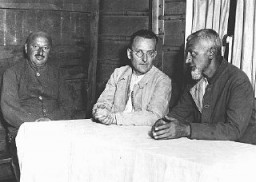
Many of the early concentration camps were improvised. Here, roll call is held for political prisoners aboard a ship used as a floating concentration camp. Ochstumsand camp, near Bremen, Germany, 1933 or 1934.
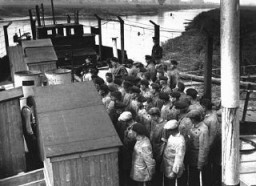
The cover of a Nazi publication on race, Neues Volk (New People), portrays motherhood with this ideal image of an "Aryan" mother and child. Germany, September 1937.

Women were included in preparations for national defense even before the war. Here, some German women form a unit of the civilian Air Defense League. Germany, November 15, 1936.
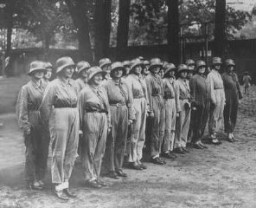
Members of the Nazi girls' organization, the League of German Girls (BDM), do a group exercise. Dresden, Germany, December 1936.
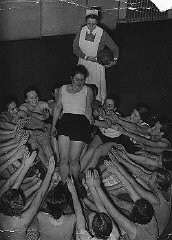
Nazi policy encouraged racially "acceptable" couples to have as many children as possible. Because of the number of children in this Nazi Party official's family, the mother earned the "Mother's Cross." Germany, date uncertain.
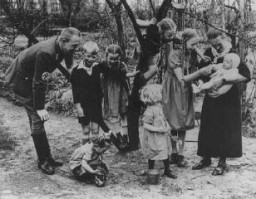
A parade of young Austrian women, members of the Nazi youth organization the League of German Girls (Bund Deutscher Maedel). Graz, Austria, February 20, 1938. The Hitler Youth and the League of German Girls were the primary tools that the Nazis used to shape the beliefs, thinking and actions of German youth.
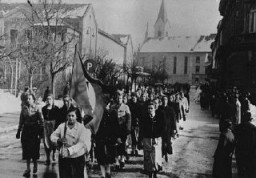
A work corps of German women marches to the fields. Beginning in 1939, many thousands of German women between the ages of 17 and 25 worked on farms as part of a national labor service program. Germany, wartime.
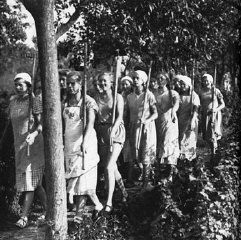
Catholic clergy and Nazi officials, including Joseph Goebbels (far right) and Wilhelm Frick (second from right), give the Nazi salute. Germany, date uncertain.
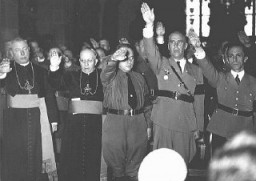
Martin Niemöller, a German theologian and pastor, on a visit to the United States after the war. A leader of the anti-Nazi Confessing Church, he spent the last seven years of Nazi rule in concentration camps. United States, October 4, 1946.
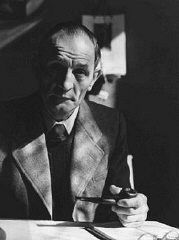
Dietrich Bonhoeffer, German Protestant theologian who was executed in the Flossenbürg concentration camp on April 9, 1945. Germany, date uncertain.
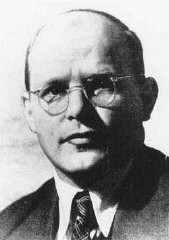
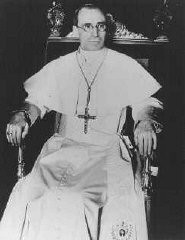
In the auditorium of the Propaganda Ministry and Public Enlightenment, Nazi Propaganda Minister Joseph Goebbels delivers a speech to his deputies for the press and arts. Berlin, Germany, November 1936.
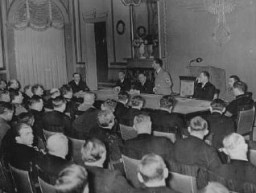
Germans crowd around a truck filled with "un-German" books, confiscated from the library of the Institute for Sexual Science, for burning by the Nazis. The books were publically burned at Berlin's Opernplatz (Opera Square). Berlin, Germany, May 10, 1933.
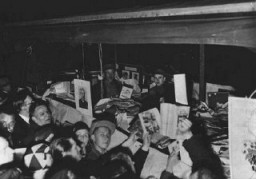
Across Germany, students took books by truck, furniture van, even oxcart, and heaped them into pyres on public squares. This image shows members of the SA and students from the University of Frankfurt with oxen pulling manure carts loaded with books deemed "un-German." Frankfurt am Main, Germany, May 10, 1933.
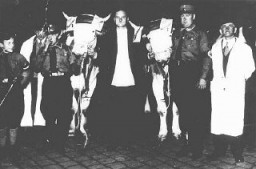
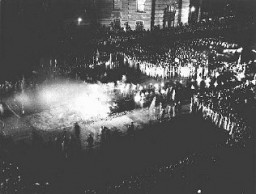
Public burning of "un-German" books in the Opernplatz (Opera Square). Berlin, Germany, May 10, 1933.
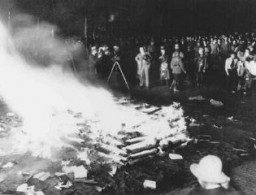
At Berlin's Opernplatz, crowds of German students and members of the SA gather for the burning of books deemed "un-German." Berlin, Germany, May 10, 1933.
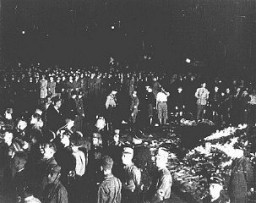
Russian-born Jewish artist Marc Chagall with his daughter, Ida. The Nazis declared Chagall's work "degenerate." After the fall of France, where he had been living, Chagall fled to the United States. United States, 1942.
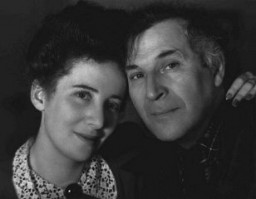
Georg Grosz, a Communist satirical artist and painter, seen here in his studio in Berlin. He fled Germany shortly before the Nazi rise to power in 1933 and was one of the first to be stripped of his German citizenship by the Nazis. Berlin, Germany, 1929.
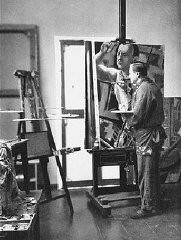
Display from "Der ewige Jude" (The Eternal Jew), a Nazi antisemitic exhibit which claimed that Jews heavily dominated the German performing arts. A phrase at the top of the display states "Shameless Entertainment." Berlin, Germany, November 11, 1938.
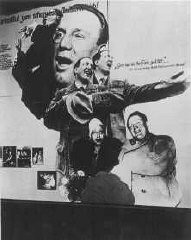
Xaver Franz Stuetzinger, a member of the Communist Party of Germany, was tortured by the SS at the Dachau concentration camp. He died in May 1935 without divulging his connections. Germany, before May 1935.
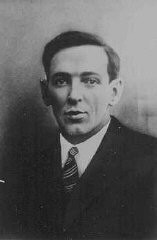
Ernst Thaelmann, leader of the German Communist Party, was detained during a mass arrest of Communists following the fire that virtually destroyed the Reichstag (German parliament) building. Germany, date uncertain.
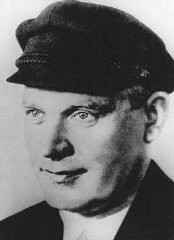
Ludwig Beck, one time chief of the Army General Staff. After his resignation in 1938, Beck became the center of the military resistance to Hitler. He was executed in 1944 for his role in the July 1944 attempt to kill Hitler. Germany, date uncertain.
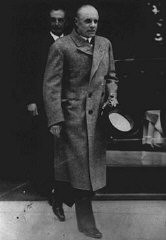
We would like to thank Crown Family Philanthropies, Abe and Ida Cooper Foundation, the Claims Conference, EVZ, and BMF for supporting the ongoing work to create content and resources for the Holocaust Encyclopedia. View the list of donor acknowledgement.